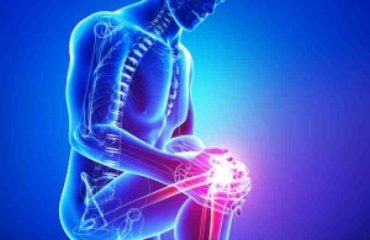One of the important risks facing teenage athletes, osteochondritis dissecans is most likely in children between 10 and 16. It can affect either the knee or the elbow.This is a particular type of damage to the cartilage that pads and lubricates the bones meeting at these joints, which also affects the underlying bone. Although severe cases may require surgery, younger patients tend to have a promising outlook due to continuing growth and capacity for bone repair.
What happens?
Osteochondritis dissecans is thought to involve loss of blood supply to the underlying joint bone. As the bone cells die off in the process of avascular necrosis, cracks and lesions eventually form. This also leads to weakness and damage in the cartilage being supported. Pieces of bone, with cartilage attached, break off and may get caught in the joint, contributing to symptoms.
This is distinct from degenerative osteoarthritis, which has similar symptoms but affects the surfaces of the joint rather than the underlying structure.
What are the symptoms?
Many of the symptoms involved are nonspecific, making an accurate diagnosis sometimes difficult. Pain can develop gradually during activity. There is generally a restricted range of motion, and mechanical symptoms including swelling, catching, locking, or giving way. The joint usually won’t straighten completely.
Although symptoms can present early in development of the injury, the degenerative process often tends to continue rapidly,  making prompt diagnosis especially important. X-ray, CT scans, or MRIs may be used to examine the bone structure and determine the extent of lesions. Other types of bone scans are used to detect blood flow.
making prompt diagnosis especially important. X-ray, CT scans, or MRIs may be used to examine the bone structure and determine the extent of lesions. Other types of bone scans are used to detect blood flow.
What causes it?
This type of injury tends to show up in athletes as a repetitive-stress condition. It is most commonly associated with high-impact sports or throwing motions. Baseball pitchers are a commonly affected group. Gymnasts can also develop this condition through actions like cartwheels and handstands.
The repeated strain is thought to potentially cause micro-fractures that interrupt blood flow to the spot. In other cases, though, trauma may be a primary cause of injury. The mechanism is still being studied, although there is a suggestion that genetics may be involved.
How can it be treated?
Treatment is intended to help the bone heal, fix fragments and repair or replace the damaged bone and cartilage. In milder cases without loose fragments, especially with younger children, more conservative strategies will involve rest and immobilization to promote healing. This may be followed by a period of physical therapy strengthening the surrounding muscles to help change movement patterns and take pressure off the joint.
Older patients, particularly with fragmented cartilage or mechanical symptoms, tend to require arthroscopic surgery to remove and clean up fragments. Microfractures drilled into the bone are sometimes used to create bleeding and promote new cartilage growth, which in follow-up studies has shown positive results at a rate of nine out of eleven teenage patients.
For larger lesions, screws may be used to stabilize the bone, and cartilage transplants from more stable parts of the patient’s joints can be used to help fill in the damaged area.
When diagnosis is made early on, prognosis can be good even without surgical treatment. Elbow pain symptoms should be checked out with an orthopedics expert so that diagnosis can a treatment plan can be made as soon as possible.


